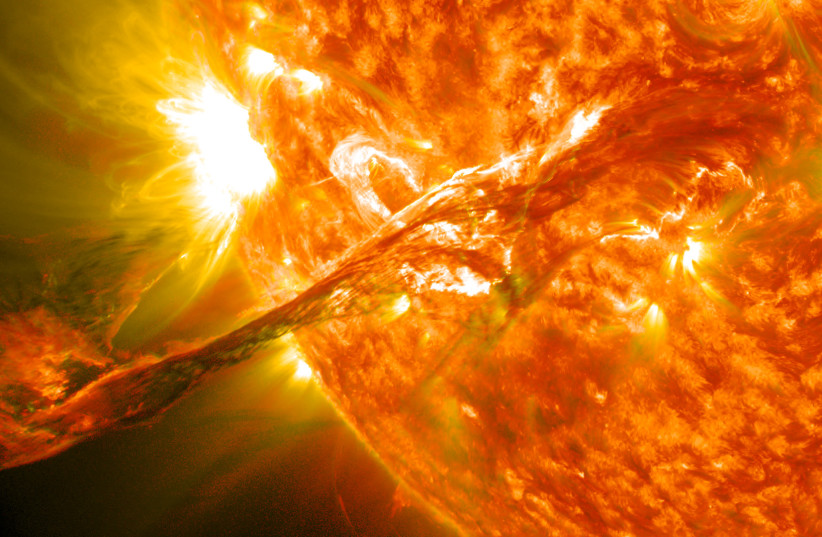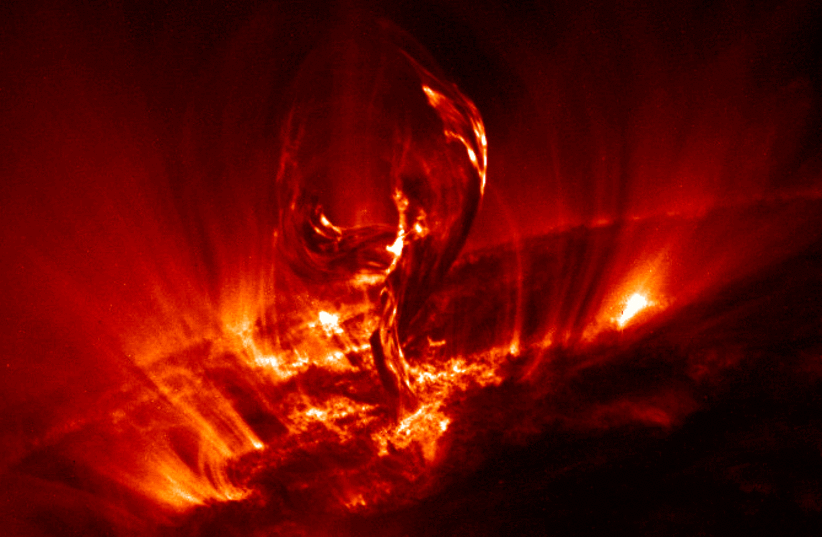A large tentacle of plasma snapped off from the sun, which reportedly created a "polar vortex," according to LiveScience.
The report stated that the entire detachment took approximately eight hours, and that video footage of the event later went viral on Twitter.
BREAKING : Scientists say a piece of the sun’s surface has broken off at the northern pole ‘A first-ever event’ pic.twitter.com/4mghp6LwyX
— Latest in space (@latestinspace) February 10, 2023
"Material from a northern prominence just broke away from the main filament & is now circulating in a massive polar vortex around the north pole of our Star," tweeted Dr. Tamitha Skov, a research scientist at The Aerospace Corporation in California. "Implications for understanding the Sun's atmospheric dynamics above 55° here cannot be overstated!"
Talk about Polar Vortex! Material from a northern prominence just broke away from the main filament & is now circulating in a massive polar vortex around the north pole of our Star. Implications for understanding the Sun's atmospheric dynamics above 55° here cannot be overstated! pic.twitter.com/1SKhunaXvP
— Dr. Tamitha Skov (@TamithaSkov) February 2, 2023

The plasma created a looping feature called "prominence" after shooting out from the sun, the report stated, but also stated that the strange aspect of this phenomenon in this situation is that the prominence broke apart and remained airborne for hours.
Such phenomena appear more and more often as the sun's 11-year activity cycle reaches the solar maximum, during which point the sun is at peak magnetic activity. The upcoming solar maximum is predicted to begin in 2025, which explains why solar activity has been more frequent in recent months.
Phenomena such as the "prominence" pose no threat to Earth itself, although fast-moving masses of plasma released from the sun can damage satellites, trigger power-grid failures and cause colorful auroras to be visible at much lower latitudes than usual.
Fortunately, none of this happened as a result of the Feb. 2 solar activity.
What other kind of solar activity can we expect?
Those on Earth may witness a plethora of solar phenomena, including solar flares, which are relatively common compared to other kinds of solar activity.
A solar flare is essentially a massive burst of electromagnetic radiation in the solar atmosphere.
How they occur is widely thought to be due to when the radiation is emitted after charged plasma particles get boosted by magnetic energy.
Solar flares aren't at all dangerous for humans, at least not directly. But in the long term, they can cause other issues.
They emit X-rays and ultraviolet radiation, though they don't ever manage to pass through the atmosphere. What they are able to do, though, is to heat the atmosphere up. This temporary heating can also cause the outer atmosphere to expand.
This can be a big problem for satellites in low Earth orbit, as it can actually drag them a bit down and start causing their orbits to decay.
In addition, absorbing solar flare electromagnetic radiation can also make the upper atmosphere more ionized, which can cause radio blackouts or blackouts in general.
